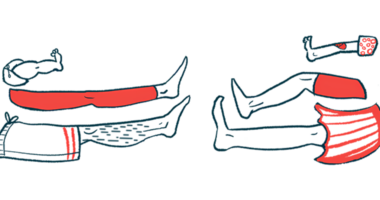Brain-region stimulation may ease motor symptoms, study finds
Rat study targets region that processes sound, emotions

Stimulating nerve cells in a region of the brain involved in processing sound and emotions may help ease motor symptoms such as those caused by Parkinson’s disease, without unwanted side effects on emotional response, according to a study in rats.
While it’s still early to understand if these findings can apply to patients, exploring brain circuits beyond the basal ganglia — a region involved in motor control and affected by Parkinson’s — may lead to new treatments that ease the disease’s motor symptoms, the researchers said.
“Even if the path toward new therapeutic approaches to alleviating the symptoms of Parkinson’s disease still appears long, such foundational research is immensely important,” Wolfgang Kruse, PhD, a researcher at Ruhr University Bochum in Germany, said in a university press release.
The study, “Optogenetic stimulation of inferior colliculus neurons elicits mesencephalic locomotor region activity and reverses haloperidol-induced catalepsy in rats,” was published in Scientific Reports as a collaborative effort from researchers at Ruhr and Philipps-Universität Marburg.
Sound processing
In Parkinson’s, the loss of dopaminergic neurons — the nerve cells in the brain that produce the signaling molecule dopamine— stops input into the basal ganglia. As a result, patients experience a range of motor symptoms, from tremor and slowed movement to stiffness and problems with balance.
Patients with advanced disease, or those who no longer respond to medication, may benefit from deep brain stimulation (DBS), in which small electrodes are placed deep in the brain — usually in parts of the basal ganglia. These electrodes are connected by thin wires to a device that delivers electrical pulses to regulate brain circuits.
The inferior colliculus is a region of the brain that processes both sound and the emotional tone behind it. It also seems to play a role in how the body moves in response to sound. While it’s not a conventional target for DBS, stimulating this region was found to ease catalepsy (loss of voluntary movement) in rats.
That finding raised the question of whether the inferior colliculus may send signals to the mesencephalic locomotor region (MLR), which is responsible for initiating and controlling voluntary movement. This region also receives input from the substantia nigra of the basal ganglia, a key region affected in Parkinson’s.
The researchers used a technique called optogenetics, which allowed them to stimulate specific nerve cells in the inferior colliculus of rats using light. They then recorded the activity of nerve cells in the MLR using electrophysiology, which measures electrical signals in the brain.
“There are indications that stimulation of this region of the brain leads to activation of the mesencephalic locomotor region, or MLR,” said researcher Liana Melo-Thomas, PhD, who led the study in Marburg. “We suspected that this would have a positive effect on ambulatory ability.”
The recordings showed that nerve cells in the MLR became active upon stimulation of the inferior colliculus using light. The response in the MLR occurred with an average delay of 4.7 milliseconds, suggesting that these regions are connected and can communicate through synapses — tiny junctions between nerve cells that pass messages using chemicals.
“Simultaneous measurements in the deeper MLR region showed increased activity in the majority of cells, although nearly one quarter of the cells were inhibited by the additional activity in the inferior colliculus,” Kruse said. This supports the idea that the inferior colliculus may affect movement by communicating with the MLR.
The researchers then turned to a model of catalepsy induced by haloperidol, an antipsychotic that works by blocking dopaminergic signaling, to understand if using light to either activate or inhibit the inferior colliculus would affect how long the rats remained immobile.
After light stimulation, only the group with optogenetic activation of the inferior colliculus showed a noticeable improvement. These rats stepped down from a bar more quickly than they had before stimulation and faster than other groups of rats. This stimulation didn’t change their general activity levels or emotional response.
“The present study contributes to our understanding of the neural circuits involved in motor control and may have implications for the development of novel therapeutic interventions for motor-related disorders,” the researchers concluded, adding that further research is needed to understand the clinical relevance of their findings.







